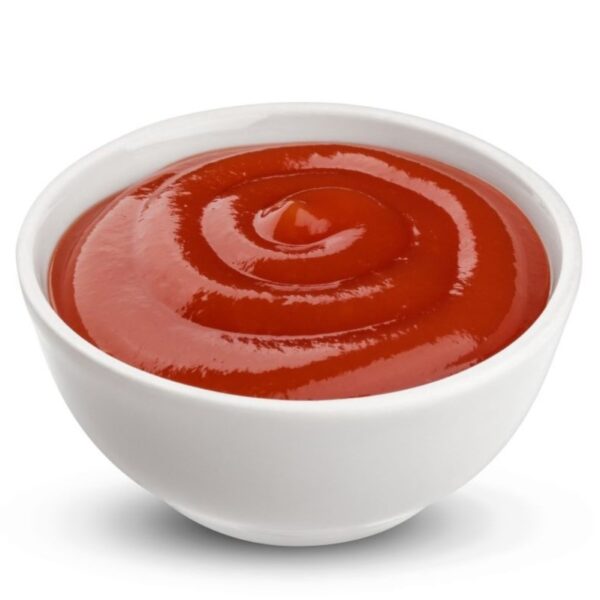Potassium ferrocyanide is a yellow crystalline compound that has been in use since the early 19th century. It was first discovered by French chemist Pierre Joseph Macquer in 1752 by combining Prussian blue with potassium hydroxide. Initially, its primary application was in the dye and pigment industry. As chemistry evolved and it was understood that ferrocyanides were non-toxic, a search for new applications began. This research led to the discovery that potassium ferrocyanide was an effective, non-toxic, anti-caking agent. This discovery led to its use as a popular additive in certain food products, such as salt. It is also used for the production of wine and citric acid.
What is Potassium Ferrocyanide?
Potassium ferrocyanide is an inorganic compound with the chemical formula K4[Fe(CN)6]·3H2O. It is the potassium salt of the coordination complex [Fe(CN)6]4−. It is an odorless, lemon-yellow monoclinic salt crystal produced industrially from hydrogen cyanide, ferrous chloride, and calcium hydroxide. It is also known as yellow potash prussiate.
Source: Wikipedia
It is highly stable and not considered toxic in its natural state, but it can be dangerous when heated with other chemicals. Potassium ferrocyanide is soluble in water and certain acids, and it is slightly soluble in some alcohol but is insoluble in ether.
How is Potassium Ferrocyanide Produced?
Historically, potassium ferrocyanide was produced from organic compounds containing nitrogen, iron filings, and potassium carbonate. Today, it is prepared by the reaction of sodium ferrocyanide on potassium chloride in a mole ratio of 1.1-1.2 to obtain coarse potassium ferrocyanide. After this reaction, 10-20 wt.% of potassium chloride is added to get the finished product with a high content of potassium ferrocyanide of 98.5 % or higher. The mother liquid resulting from the first reaction is treated by a potassium-calcium ferrocyanide transformation method to recover potassium ferrocyanide and return it to a second reactor. The mother liquor from the second reactor is then transferred to the first reactor, giving the advantage of getting a high output rate of up to over 95%, by-products of sodium chloride and calcium carbonate, and no waste liquid discharge.
Use of Potassium Ferrocyanide in the Food Industry
Potassium ferrocyanide is a vital food additive widely used as an anti-caking agent in salt and salt substitutes. It is also used as a processing aid in winemaking and citric acid production.
Salt tends to clump together in humid conditions. Small amounts of anti-caking agents are added to table salt and other powdered food products to prevent clumping. When added to salt, potassium ferrocyanide ensures that the grains remain free-flowing.
In the case of wines, potassium ferrocyanides are used for their iron/mineral treatment. While processing, the wine acquires more minerals, especially iron, due to contact with various fermentation machinery, pumps, etc., and biological iron from grapes. Iron can lead to discoloration defects in both red and white wines. Potassium ferrocyanide can be an effective filtration aid for removing iron from wine. This treatment poses safety and environmental protection problems but is necessary for efficiently removing iron from wines rich in this cation.
Product Examples
Here are some examples of products that contain potassium ferrocyanide:
| Food Additives | Salt, Salt Substitute, Citric Acid |
| Oenology | Red Wine, White Wine, Sparkling Wine |
Properties of Potassium Ferrocyanide
| Chemical formula | K4[Fe(CN)6] |
| Molar mass | 368.35 g/mol (anhydrous)422.388 g/mol (trihydrate) |
| Appearance | Light yellow, crystalline granules |
| Density | 1.85 g/cm3 (trihydrate) |
| Boiling point | (decomposes) |
| Solubility in water | trihydrate 28.9 g/100 mL (20 °C) |
| Solubility | Insoluble in ethanol, Ether |
| Magnetic susceptibility (χ) | −130.0·10−6 cm3/mol |
Formulation Considerations
Stability
Potassium ferrocyanide is one of the few quadrivalent salts that is sufficiently stable for use in various applications. This salt must not be dehydrated at temperatures greater than 100 ℃. In case of dehydration, the salt must be kept in the dark to prevent decomposition. When heated with excess bromine at 150-250 ℃ for about seven hours, potassium ferrocyanide decomposes to form cyanuric bromide. Otherwise, potassium ferrocyanide is stable under ordinary conditions.
Dosage
There has been much controversy regarding using potassium ferrocyanide as a food additive. Potassium ferrocyanide was evaluated by the UK Committees on the Toxicity of Chemicals in Food, Consumer Products and the Environment (COT) in 1994 and set a group ADI (acceptable daily intake) limit for ferrocyanides of 0 to 0.05 mg/kg body weight per day.
In recent years, The Scientific Committee for Animal Nutrition (SCAN) evaluated the safety of the target animals, the users, the workers, the consumers, and the environment of potassium ferrocyanide used as anticaking agents. It was concluded that 20 mg/kg of potassium ferrocyanide in salt is acceptable and safe for human consumption.
Effect of Potassium Ferrocyanide in Food Products through Salt
The anti-caking agent potassium ferrocyanide affected lipid oxidation in frozen and minced pork in normal concentration when added with food-grade salt to yield 2% NaCl in the product and in ‘unrealistic’ high concentrations added separately or with analytical-grade salt. The level of potassium ferrocyanide obtained from adding 2% food-grade salt accelerated the development of lipid hydroperoxides. Still, it affected the outcome of TBARS (Thiobarbituric Acid Reactive Substance) to a lesser degree. High levels of potassium ferrocyanide seem to protect hydroperoxides from degradation to secondary lipid oxidation products measured as TBARS.
Sensory Properties
Potassium ferrocyanide is a neutral salt, and it is practically odorless. It tastes slightly bitter, but adding it in salt for anti-caking with the suggested dosage will not influence the taste of the final formulation.
Safety and Regulatory Considerations
Regulation authorities like the U.S. FDA and the European Food Safety Authority (EFSA) have specified a safety standard and defined acceptable levels for potassium ferrocyanide in food products. The World Health Organization (WHO) confirms that potassium ferrocyanide is safe for consumption at approved levels. This global endorsement reinforces the safety of potassium ferrocyanide as a food additive.
| FDA Information | As an anti-caking agent, potassium ferrocyanide is approved as a food additive in specified dosages per U.S. FDA Regulations. It is considered “Generally Recognized As Safe” (GRAS) when used following good manufacturing practices. |
| EU Information | As an anti-caking agent, potassium ferrocyanide is approved as a food additive in specified dosages per EU Regulations. The European Food Safety Authority (EFSA) permits using potassium ferrocyanide as an anti-caking agent in salt, with a maximum allowable concentration of 20 mg/kg. |
Many other countries, including Canada, Australia, and New Zealand, have similar regulations limiting potassium ferrocyanide concentration in food products.
Identification Numbers
| Chemical Name | Potassium hexacyanidoferrate(II) |
| CAS Number | 14459-95-1 |
| REACH Registration Number | The substance/mixture does not contain components SIGALD- P3289 Page 8 of 10 The life science business of Merck operates as MilliporeSigma in the US and Canada, considered to have endocrine disrupting properties according to REACH Article 57(f) or Commission Delegated Regulation (EU) 2017/2100 or Commission Regulation (EU) 2018/605 at levels of 0.1% or higher. |
| EC Number | 680-418-3 |
| INS No. (Food Additive) | 536 |
| CA Index Name | Potassium ferrocyanide |
Fun Facts About Potassium Ferrocyanide
- When mixed with iron, potassium ferrocyanide forms a deep blue pigment known as Prussian blue. This pigment has been used in paints, inks, and dyes for centuries.
- Potassium ferrocyanide played a role in early photography. When used with ferric citrate, it creates a photosensitive solution. This was utilized in the cyanotype process to produce blueprints and some of the first photographic prints.
- Though the name might be unsettling to some, the cyanide in potassium ferrocyanide is tightly bound to the iron, making it difficult for the toxic cyanide ion to be released under normal conditions. So, even though it has “cyanide” in its name, it isn’t as dangerous as other cyanide compounds.
- Potassium ferrocyanide has been used in wine production to remove iron and copper. This process, called fining, helps prevent the formation of undesirable and potentially harmful compounds.
- In its crystalline form, potassium ferrocyanide forms beautiful, bright yellow.
Additional Resources
- Wikipedia – potassium ferrocyanide
- Vedantu – potassium ferrocyanide
- Google Patents – CN1245142A
- ACS Publications – 10.1021/ja01279a504
- 911 Metallurgist – Ferrocyanides
- EFSA Journal – 10.2903/j.efsa.2018.5374
- ScienceDirect – 0309174096845852
- Infinity Learn – Chemical Properties of potassium ferrocyanide
- SAMaterials – potassium ferrocyanide in Salt: A Safe and Approved Food Additive



